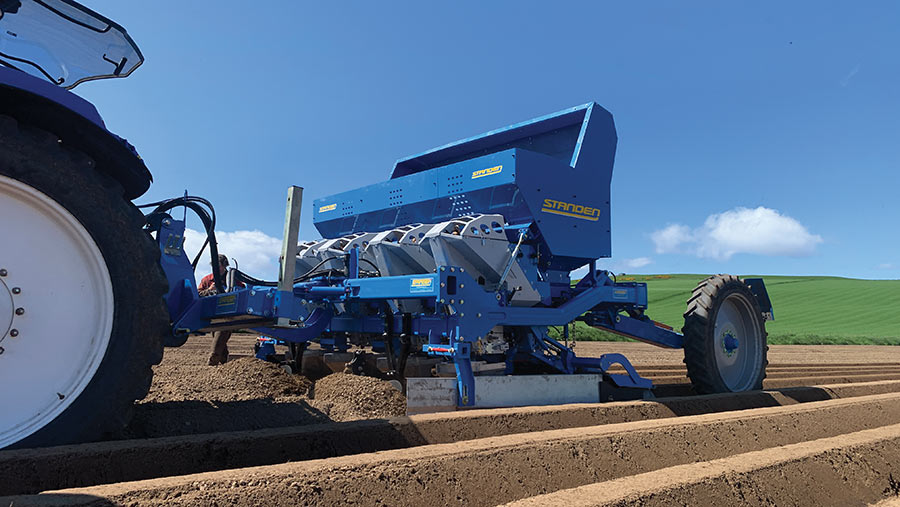Standen develops new four-row trailed potato planter
 © Standen
© Standen A sharp rise in popularity of four-row self-propelled potato harvesters has prompted Standen Engineering to design a new trailed SR400 four-row, offset cup planter to match up both operations on GPS.
The Ely-based outfit released its twin-row SR200 last year, which incorporated a clever new cup design that copes with a greater range of seed tuber sizes.
The updated cup planter aimed to satisfy demand from those moving away from high-output belt planters – which can be tricky to set up and expensive to maintain – and back to steadier, but lower maintenance and more accurate cup systems.
See also: How potato grower variably applies potash and magnesium
These can generate some worthwhile cost savings over larger acreages as seed costs increase.
Standen’s Ed Gilbert says there is still enthusiasm for the two-row option but, as potato production continues to consolidate and businesses get larger, increased output and reduced labour requirements of bigger planters are appealing.
“If a farm can run a single four-row planter instead of two twin-row machines, they are cutting the need for one tractor and operator, with staff increasingly hard to find,” he adds.
Field testing
The SR400 was tested in the field during spring 2023. It uses the same cup metering system as the mounted SR200, but in a larger trailed chassis with a 5t seed hopper.
It can be combined with a cultivator or power harrow at the front for planting directly into prepared land, or its hydraulic headstock allows the planter to work offset where beds have been formed and de-stoned.
Setup is very easy, with the operator simply entering a target spacing or population per acre or hectare in the Topcon control terminal, which takes care of the rest.
An optional auto pressure hood can form the rows, with the required force entered into the control unit. The system then regulates itself during operation, releasing pressure if too much soil is in the hood, and vice versa.
The minimum horsepower requirement for the SR400 is 150-200hp, depending on topography, soil type and configuration.
For road transport, the rear wheels with steering axle can be narrowed hydraulically to meet the 3.5m transport width regulation.
The SR400 goes into production for 2024 and Standen will be offering a small batch for next season. A high-spec model will cost about £115,000 on-farm.

